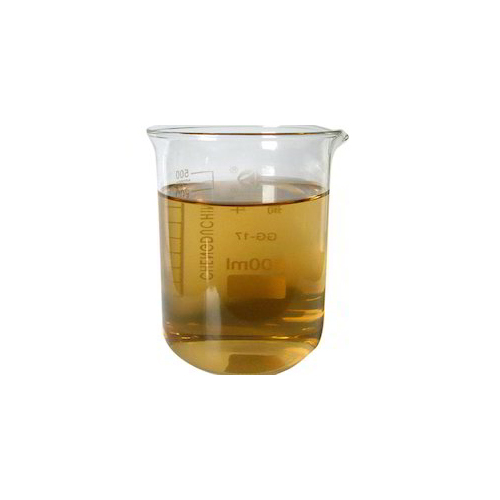Product Description
Accessible in clear or hazy liquid form, offered non ionic wetting agent is used as an essential ingredient of water based ink, aqueous adhesive, emulsion paint ( that provides metallic finish to applied surface), distemper, textured paint and cleaning solutions. It is basically combination of propoxylate and ethoxylate. This non ionic wetting agent easily dilutes in water. Its dosage varies as per the type and amount of paint/ink/distemper. Standard of this wetting agent has been verified on the basis of its shelf life, compositional accuracy, environment friendliness and stability of its properties under different temperature conditions.
FAQs of Non-Ionic Wetting Agent
Q: What is a non-ionic wetting agent?
A: A non-ionic wetting agent is a substance compound utilized in different ventures, like farming, materials, and cleaning, to decrease the surface strain of fluids. This permits the fluid to spread and infiltrate all the more effectively, further developing wetting, spreading, and in general adequacy.
Q: How does a non-ionic wetting agent work?
A: Non-ionic wetting agents work by diminishing the surface strain of water or different fluids. They contain particles with both hydrophilic (water-drawing in) and hydrophobic (water-repulsing) properties. When added to a fluid, these particles disturb the strong powers at the fluids surface, permitting it to really spread and stick to surfaces more.
Q: Are non-ionic wetting agents protected to utilize?
A: Non-ionic wetting agents are by and large viewed as protected when utilized as coordinated. In any case, adhering to maker suggestions and wellbeing guidelines is significant. A few details might be poisonous or disturbing in the event that misused or ingested, so legitimate safety measures ought to be taken.
Q: Can non-ionic wetting agents be utilized in natural cultivating?
A: Indeed, certain non-ionic wetting agents are supported for use in natural cultivating. Natural confirmed wetting agents are accessible, and they satisfy the guidelines set by natural affirming bodies. Ranchers ought to guarantee they pick items that are consistent with natural guidelines assuming they expect to involve wetting agents in natural farming.
Q: Do non-ionic wetting agents have any natural effect?
A: Non-ionic wetting agents are by and large considered to have a low natural effect when utilized as coordinated. Notwithstanding, similar to any synthetic item, inappropriate use or unnecessary application can prompt natural worries. Its fundamental to follow prescribed application rates and removal rules to limit any expected effect.
Optimized Industrial EfficiencyDesigned specifically for the demands of textile, agrochemical, leather, and detergent industries, this non-ionic wetting agent facilitates rapid and even dispersion of solutions. Its stable, low-foaming liquid form ensures processes run smoothly, reducing operational interruptions and boosting productivity.
Environmental and User SafetyThis product is both non-toxic and readily biodegradable, aligning with modern environmental regulations. Its odorless and clear appearance, paired with stability during storage, minimizes risks to personnel while offering environmentally responsible performance.
Versatility and CompatibilityCompatible with anionic, cationic, and other non-ionic chemicals, this wetting agent integrates seamlessly with existing formulations. This versatility makes it an ideal choice for manufacturers seeking simplicity, adaptability, and reliability in their production lines.
FAQs of Non Ionic Wetting Agent:
Q: How is the Non Ionic Wetting Agent typically used in industrial processes?
A: It is mainly employed as a wetting or dispersing agent in textiles, agrochemicals, leather processing, and detergent manufacturing, where it ensures uniform solution distribution and improved material penetration.
Q: What benefits does this non-ionic surfactant offer compared to other types?
A: Key advantages include low foaming, compatibility with a wide range of chemicals, high purity (99%%), environmental friendliness, and effective performance without imparting odor or color to end products.
Q: When should I add this wetting agent to my processing formulation?
A: For best results, incorporate the agent during the initial mixing phase of your batch or formulation, ensuring thorough dispersion and optimal wetting action throughout the process.
Q: Where can this product be applied beyond textiles and detergents?
A: Besides its primary uses, it can be effectively utilized in leather treatment, as a dispersant in agrochemical mixtures, and in any application requiring enhanced wetting and spreading properties.
Q: What is the recommended process for storage and handling?
A: The agent should be stored in tightly closed HDPE drums (50 kg or 200 kg) in a cool, dry, and well-ventilated area. Under normal storage conditions, it remains stable and retains its efficacy for up to 12 months.
Q: How does this wetting agent support environmental sustainability?
A: Designed to be readily biodegradable and non-toxic, it minimizes environmental impact during use and disposal, supporting greener and safer industrial operations.
Q: What should I do if I need assistance selecting the right concentration or application method?
A: You can contact the manufacturer or supplier for technical support and recommendations tailored to your specific application, ensuring you achieve optimal performance and safety in your process.


